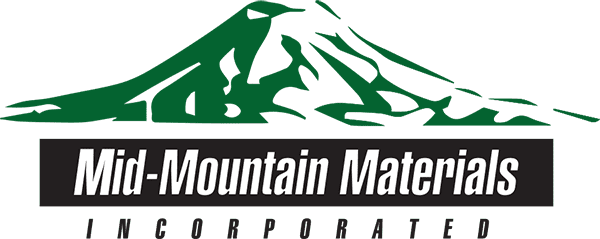Industrial fire control systems are a cornerstone of infrastructural safety. They comprise the network of systems used to detect and suppress fires, including alarms, automatic sprinklers, fire doors, and more. Naturally, industrial fires pose a range of serious hazards. Severe injury, loss of life, damage or destruction of assets. These are just a few of the likely impacts of unsuppressed fire in an industrial setting. They also pose risks to the nearby community and longer-term losses related to downtime. There’s also a danger of negative brand impact and legal penalties if the control system is retroactively deemed non-compliant with fire safety regulations.
Thus, it’s important to get your fire control system right.
Insulation can be a crucial part of an effective fire control system. Fabrics, like fiberglass, provide an additional layer of flame resistance, durability, and thermal insulation. These properties can be elevated using fire-retardant coatings like polyurethane (PU). PU coated fabrics are known for their fire retardant properties, making them suitable for applications where fire resistance is critical. Here, we explore the advantages and limitations of using polyurethane-coated fabrics in fire control systems.
Advantages of PU Coated Fabrics in Fire Control Systems
Fire Retardant Properties
PU-coated fabrics can be engineered with fire retardant finishes. These finishes help them resist ignition and slow the spread of flames. This characteristic is crucial in preventing fires from escalating, allowing more time for intervention and evacuation.
Waterproof and Durable
The PU coating provides waterproofing and increases the fabric’s durability, making it suitable for both indoor and outdoor fire control applications. This durability ensures the fabric can withstand harsh conditions and prolonged use without significant degradation.
Versatility
Fire control systems can use PU coated fabrics for various components, including in fire hoses, protective covers for equipment, and flame-resistant barriers. Their versatility allows them to be adapted to different needs and environments.
Safety Standards Compliance
Many PU coated fabrics meet stringent fire safety standards, such as BS7837. This compliance ensures that the fabrics perform adequately in fire scenarios, providing an added layer of safety and reliability.
Lightweight and Strong
With options like 240g/m² weight and high tear/tensile strength, PU coated fabrics offer a good balance of lightness and durability. This combination is essential for fire control equipment that needs to be both portable and robust.
Chemical Resistance
PU coatings can provide resistance to various chemicals, which is beneficial in firefighting environments where exposure to hazardous substances is common.
Flexibility
PU coated fabric remains flexible, allowing for the easy storage and deployment of fire control equipment. This flexibility is particularly useful for items like fire hoses that need to be quickly accessed and used.
Heat Resistance
While not entirely fireproof, properly engineered PU coated fabrics can withstand high temperatures better than untreated fabrics. This heat resistance makes PU coated fabrics suitable for use in environments where exposure to high temperatures is likely.
Limitations of PU Coated Fabrics in Harsher Environments
Despite the numerous advantages, PU coated fabrics have certain limitations, particularly in harsher environments where extreme fire resistance is required.
Restricted High-Temperature Resistance
PU coated fabrics are not designed to withstand extremely high temperatures. In applications such as aerospace or industrial settings where temperatures can soar significantly, specialized fabrics with higher resistance are necessary.
Alternatives for Enhanced Fire Resistance
For environments requiring superior fire protection, alternatives such as ARMATEX® silicone/intumescent coated fabrics are recommended. These fabrics feature an intumescent coating that expands when exposed to high temperatures, providing enhanced fire resistance suitable for cargo holds, fire barriers, and other high-risk areas.
Low Smoke and Heat Release Requirements
Specialized fabrics like ARMATEX® NF 14 CARGO TEX and ARMATEX® SIF 24 provide low smoke and heat release properties. This makes them ideal for aerospace applications where these factors are critical for safety.
Compliance with Industry Standards
Fabrics used in high-risk environments need to comply with stringent industry standards and regulations, like those set by the FAA for aerospace applications. PU coated fabrics often fall short in meeting these rigorous standards.
Enhanced Durability and Flexibility
Specialized fire-resistant fabrics offer superior durability and flexibility, which are essential in high-temperature applications. For instance, ARMATEX® SF 37 JETSTAR is designed for use in passenger boarding bridges. It also meets NFPA fire safety specifications.
Now You Know About PU Coated Fabrics, You Need To Decide If You Will Use Them
PU coated fabrics are a valuable component in fire control systems due to their fire retardant properties, durability, and versatility. Alongside this, PU coated fabrics can deliver water resistance, withstand chemicals, and endure against certain amounts of heat. However, their limitations in extremely high-temperature environments necessitate the use of specialized fabrics for applications that demand enhanced fire resistance. By understanding the strengths and limitations of PU coated fabrics, it is possible to select the appropriate materials that ensure the highest level of safety and performance in fire control systems. Polyurethane coated fabrics, as well as other coated fabrics, can be viewed on our website. Visit our coated fabrics page and see which one of our high-quality products is for you.

